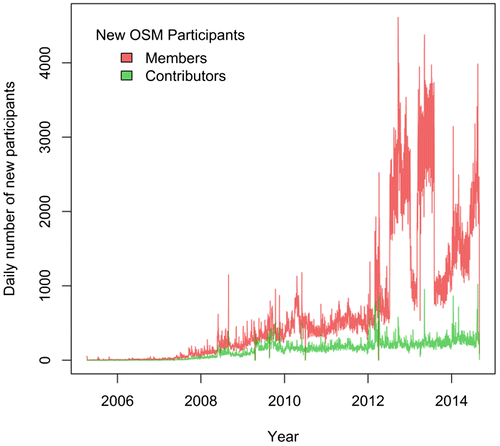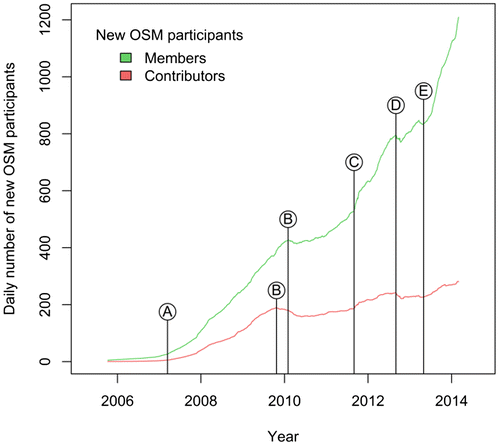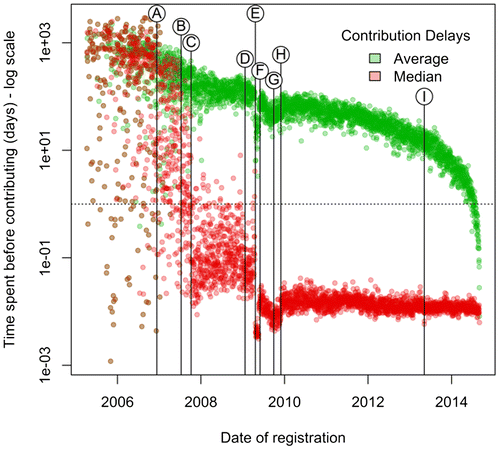Figures & data
Table 1. Classification of events related to the OSM project Wiki.
Table 2. Rupture points in spamming processes and potentially related events. “Date” refers to the rupture points, “Prior” and “After” show the proportion of accounts potentially derived from bot processes for each rupture points, “Days” is the number of days between the rupture point and the most relevant event found in the list within the surrounding days.
Figure 3. Compared time series analysis plots of (a) rates of new registered OSM members and (b) rates of new contributors, showing the observed values, the trend, the seasonal, and the random components. Source: Observed and trend values are the actual number of people, seasonal and random values are a proportion of the trend value.






